How much freedom should you give your kids? What about discipline? Parenting concepts vary wildly around the world. Here’s how it works in Norway.
I’m at the parent teacher conference. We’re seated around a table; my child’s two homeroom teachers on one side, my husband and I, with the teen between us, on the other.
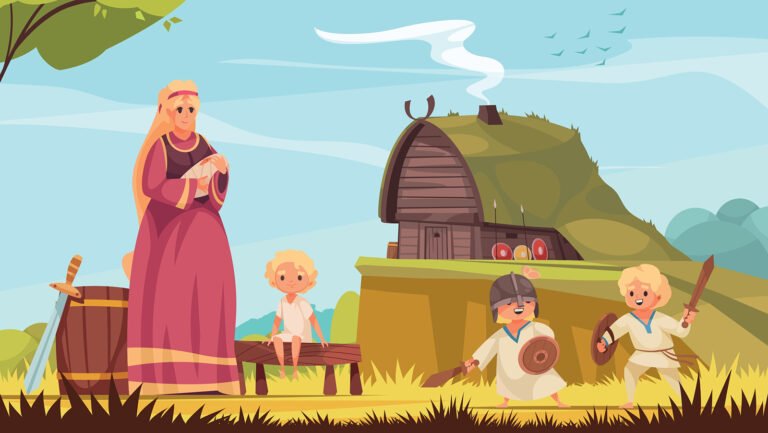
‘Do you check his homework weekly?’
‘Do you keep track of the weekly planner for class?’
‘Have you looked through the test results we sent home? I don’t recall seeing a signed return from you.’
‘Have you looked at the links to various useful websites on the school home page?’
I feel partly silly, partly defensive, and partly annoyed. I haven’t done most of the things I’m asked, and that makes me feel silly. It also makes me feel annoyed, because there is a reason that I haven’t done them. This again leads to the feeling of defensiveness.
‘Actually, I haven’t checked on weekly schedules and homework progress….’, I start. Silence.
‘My husband and I,’ I continue, looking at him, willing him to nod (he does), ‘ehmm, my husband and I feel it is important to give our children some time and space to figure things out on their own. Make mistakes and own them,’ I continue, dimly aware that I sound like a parenting blog.
More silence. Everyone is looking at me. Except the teen, who is rolling his eyes and staring at the ceiling; but then, that’s normal.
Read more: Parenting as a Foreigner in Norway
‘It is his first term in lower secondary school, and we wanted to give him space to figure out what is expected from him, work out a schedule and timekeeping skills on his own,’ I finish, adding ‘you know…. encourage independence and responsibility for one’s actions?’
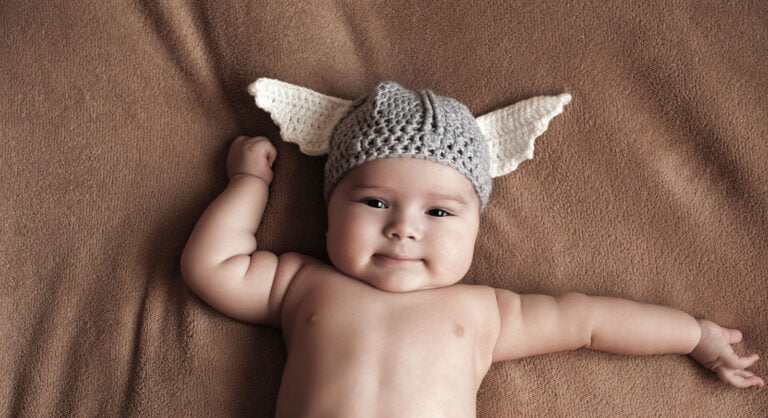
No-one is nodding. I feel like a bad parent.
Parenting norms: changes across cultural context and time
I did not become a parent in my home country. In fact, I left Norway in my 20s; well before I, and most of my friends, became parents. I had my three children in far-away lands, supported by multicultural, multilingual groups of expat women.
It was always obvious to me that different parents, from different cultural contexts, bring wildly different ideas about parenting to the table. What environments are safe and good for children? What expectations are reasonable? What values do we teach our kids, and what kind of people do we ultimately hope they become? How involved should parents be? These are norms and values that change, not just with cultural context but also with time.
Prior to repatriating 3 years ago, my sole personal experience with parenting in Norway was the parenting myself and my generation received, circa 1980s.
Our first six months living here brought an unexpected culture shock, realizing how incredibly dependent my own children were compared to most of their peers! Where mine had been driven everywhere (safety), their peers walked unsupervised to school and home, and used public transport to get around elsewhere.
Where mine had barely been home alone (safety), their peers had been for years. Where mine had addressed their tie-and-suit clad teacher ‘Mr. Smith’, their peers greeted jeans-and-sneakers-wearing ‘Morten’ every morning. Just.
Read more: From Keychains to Smartphones: Raising Independent Children in the Age of Technology
As I recovered from the initial shock, it seemed reasonable to read up on raising modern Vikings. Here’s what I learned:
Norway: From housewives to working parents
The 1950s brought a marked shift in the historical development of Norwegian child rearing ideas, says Harald Thuen and Hilchen Sommerschild in a 1997 book on parenting in a historic perspective.
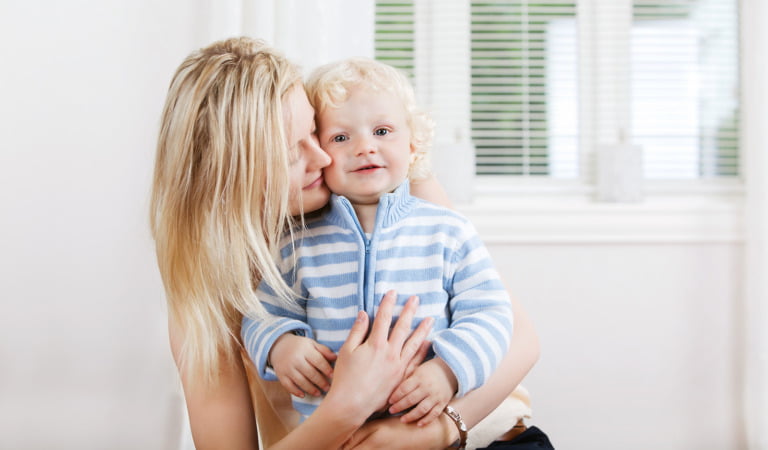
Where child rearing had previously been a rather authoritative affair, with corporal punishments and an ideal of obedient but perhaps largely unseen children, the 1950s brought an increased focus on the child’s emotional and individual needs. These needs were the responsibility of mothers.
Economic policies encouraged families – perhaps especially urban families – to live off the husband’s income, writes Thuen and Sommerchild (my translation). Economists, apparently, debated the point of women gaining an education at all, seeing as they largely proceeded to get married and stay at home raising kids and doing housework rather than join the formal work force.
Mothers, women were told, are the best caretakers for children. Only she could provide the child with appropriate emotional care and support. Dad was unsuitable as a primary caretaker, and modern daycare was, if not nonexistent, then certainly nowhere near as available and socially acceptable as what we see today. Women should be mothers and mothers should be home.
The focus was on creating safe and supported children, and the main responsibility for achieving this was placed on mum.
Not until well into the 1960s and through the 1970s, in line with the rise of the women’s rights movement and more available contraception, did these urban women start to leave the kitchen, the dust cloth and, to some extent, the children, behind to join the formal workforce.
‘In 1960, one of ten married women had paid work,’ share Thuen and Sommerschild, (my translation), ‘in 1970, four of ten, in 1980 close to six of ten and in 1990 almost 8 of ten.’
But if mum was at work, where were the children?
The rise of the working mother and the kindergarten child
The Norwegian women’s rights movement of the 70s demanded the right to free abortion, equal pay, equal working conditions, political influence – and the right to (institutionalized) childcare in the form of kindergardens (barnehager).
The move from home to kindergarden is one of the defining characteristics of raising modern Vikings.
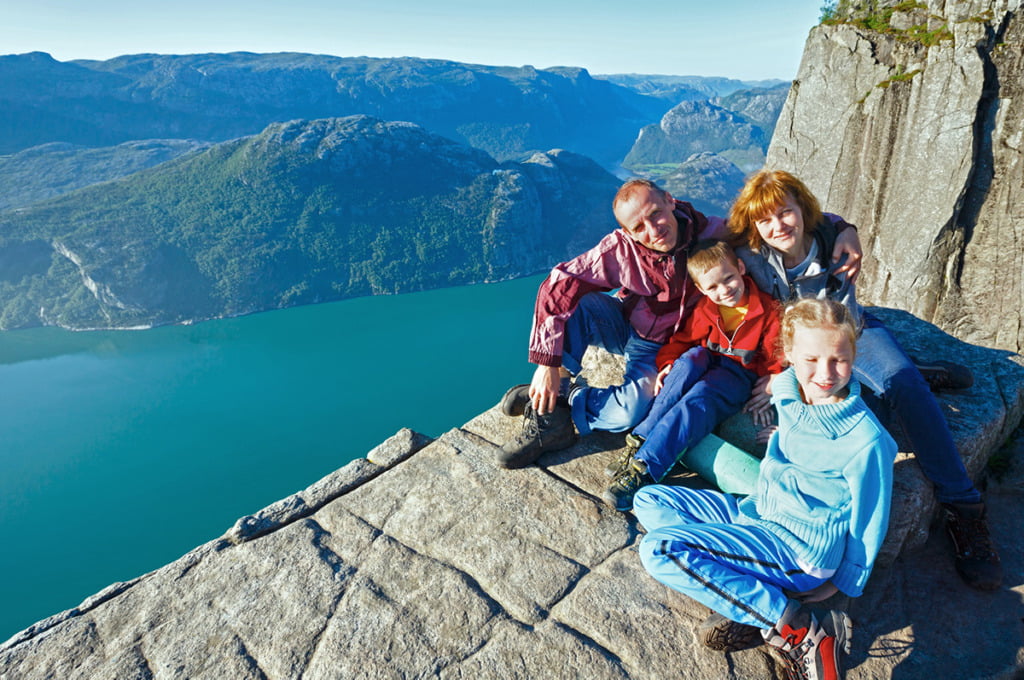
In the 1970s and 80s, sending the children to kindergarden was a growing trend, but according to Marte Dælen , it wasn’t until around 2000 that things really changed and we saw the numbers of kids in daycare, supported by parents, public opinion and politicians alike, that we find today.
Today, over 90% of all children under the age of 6 attend kindergarden in Norway. Kindergardens provide kids with appropriate care from trained professionals, and parents with choices. They are an integral part of the welfare state and fees are subsidized to be affordable.
Alongside the development of women’s rights and kindergardens was the development of family structure. We’ve come a long way from the ideal of the stay-at-home mum and working dad.
Families today come in a myriad of different forms and shapes, and thankfully, both men and women are largely recognized as appropriate primary caretakers.
The power balance, if we can call it that, within the family has also shifted. Not only are the parents more equal in terms of decision-making power, roles and responsibilities, but the family structure has also moved from a hierarchical to a flatter structure between parents and children.
Child-rearing ideas: can we agree on a set of common values?
It is not for me to make grand statements about ‘Norwegian values’ – cultural differences within a Norwegian context are many. I can, however, offer a few generalizations.
Freedom and responsibility
What I remember from childhood is lots of freedom, unstructured and unsupervised play, and some firm boundaries in the form of restricted areas and safety rules.
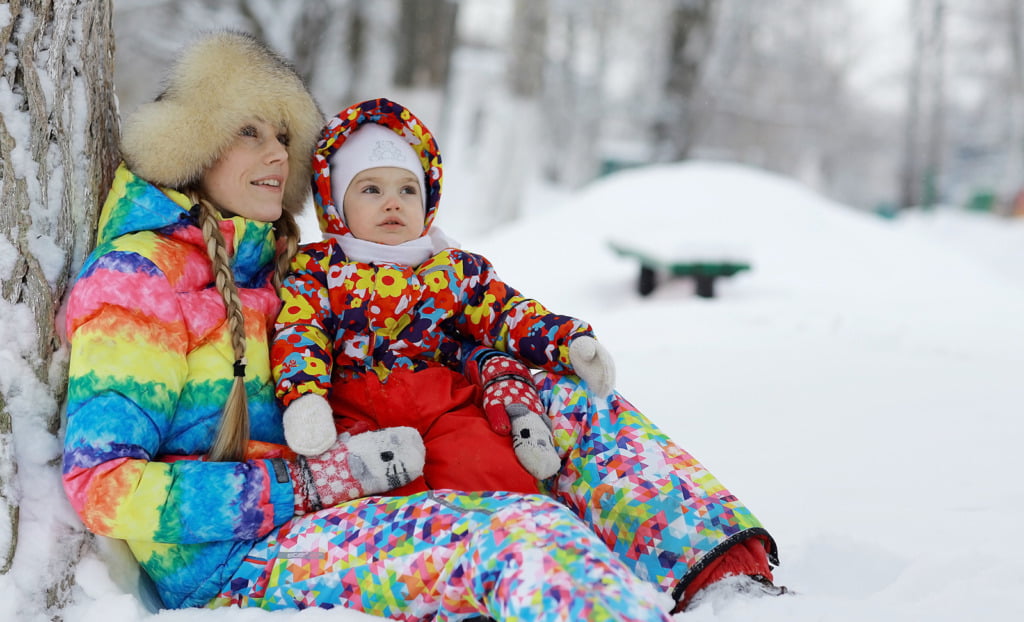
‘You may not go further away than the school building, you must tell me who you’re playing with and be home by 6pm,’ I was instructed. ‘Have fun!’
Similarly, ‘…when I was about to start primary school, my mother said something like this to me’, shares Karin Ellis in her book Working with Norwegians. ‘Now you will be going to school, and I am going to practice Frihet under ansvar on you. This means that you will be given homework at school, and I will trust you to always do your homework without me instructing you to do it or checking on you. I will expect you to actively take responsibility for your homework. (…) This is called Frihet under ansvar. (With freedom comes responsibility).’
Frihet under ansvar is perhaps not all that dissimilar to so-called free-range parenting:
‘Children should be given more freedom, which builds confidence and independence’, claims New York based free-range parenting advocate Lenore Skenazy, adding that ‘we must trust them to make their own decisions.’
The ‘hand off’ parenting of the 80s have, in retrospect, been criticized as a little too hands off by some and in fairness, it wasn’t all fun and games.
One of my earliest childhood memories is sending my baby brother down a steep hill in his stroller (freedom minus responsibility), and I am permanently scarred from accidentally watching Poltergeist at age 5, when my friend’s 7-year old brother had been tasked with watching us.
Our neighbor didn’t speak to my mother for a long time after I’d transformed their daughter’s hair from goldilocks to ill-fitting crew cut at age 6.
Haircuts aside, I think many will agree that the ideals of individualism and freedom are still strong among Norwegian parents today. We teach our children to make their own choices, to pursue individual dreams and happiness and perhaps to value individual freedom over collective duty.
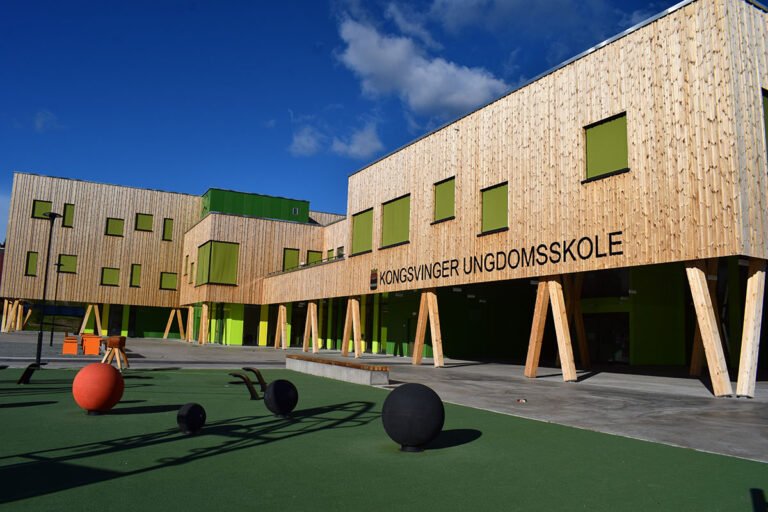
Children are also often asked to voice their opinion from a very early age, and their thoughts are listened to. Both sociologist and TV personality Harald Eia, of Norwegian Broadcasting Corporation series ‘Sånn er Norge’ (This is Norway) and Norwegian Research Council points to independence as the most important ‘Norwegian value’ children are taught.
Empathy and norm internalization
The 1990s, according to Thuen and Sommerschild, brought a focus on empathy to child rearing norms. Magne Raundalen, one of Norway’s leading child psychologists, argued that parents should focus more on helping their children learn how to control themselves through internalizing norms and values.
Parents, he said, need to talk to their children and explain what, how and why, rather than simply state this that and the other.
Tidsklemma
As we move into the 2000s, more parenting trends seem to materialize alongside concepts like ‘organisert hverdag’ (organized everydaylife) and ‘tidsklemma’ (the time squeeze).
Parenting is busy for many; with fulltime jobs, kindergarden, housework and dinner as well as a host of organized activities for adults and children. Activities play a major role in the lives of many children, and if there is one thing that unites football-, handball-, gymnastics-, hockey- and athletics clubs across the land, it is that they rely entirely on the goodwill, time, and effort of parent volunteers.
Parents are coaches, board members, social media producers, cake bakers, cleaners, and salespeople at weekend tournaments and weekday training sessions. Parental volunteer efforts contribute to keeping costs down, ensuring participation is possible for more children. This is not everyday life for everyone, but it is part of everyday life for many enough people to deserve a word; tidsklemma.
The turn of the century also brought the internet, and an ever-increasing stream of available content, education, and information. Baby massage, baby books, toddler activities.
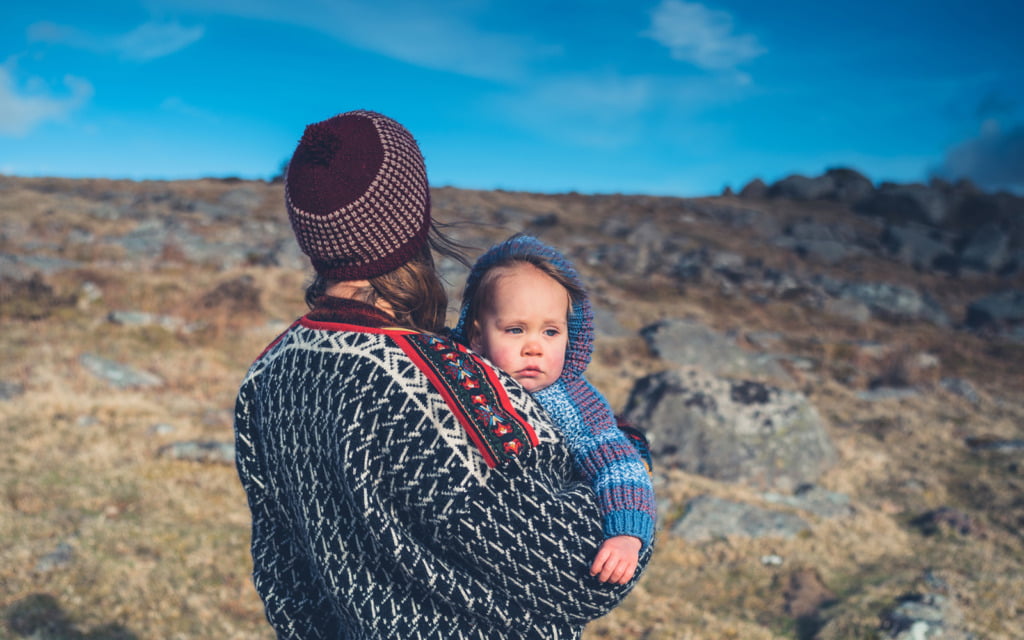
Which car seat, bike helmet and stroller win best in test this year, and which music school offers the best piano teacher? Pro or con phones and social media? If pro, at what age, and with what support? Ipads, gaming, Google drive – yes or no? What is best practice?
The information stream is endless, as is the stream of good advice in the form of books, articles, and podcasts, available everywhere.
Helicopters, curling, sherpas and the rest of it
In this context, Norwegian parenting norms seem to have been influenced by terms like helicopter parents, curling parents/lawnmower parents, snow plough parents /bulldozer parents and Sherpa parents.
It is challenging to keep these terms apart: they all seem to offer a high level of parental involvement and parents ‘helping’ the children by removing obstacles, paving the way, and securing the road ahead.
Some critics are concerned with parents who cook, clean, do laundry and drive children; not only young children, but also children who many would agree are old enough to at least contribute to upkeep of the household themselves.
Others seem more concerned with parents who organize everything from ‘play dates’ to ‘enrichment classes’ and are ambitious on behalf of the kids.
The role of temperaments
At the same time, it has been stated that ‘parenting trends’ are unhelpful, since all children are individuals with individual temperaments to consider.
Stein Erik Ulvund, professor of pedagogics, has urged parents to recognize their children’s innate temperaments and adjust their parenting style accordingly in his book Rakkerunger og englebarn – oppdragelse uten fasit (Rascals and angels – parenting without an answer-key, my translation). Parents, he says, must consider their children’s individual differences and navigate the constant flow of information and advice with that in mind.
Back to the future?
Perhaps parents have taken on a little too much in terms of being project leaders for their own children? Perhaps we should consider a step back to ‘the good old days’?
Psychologist and Norwegian parenting guru, Hedvig Montgomery, states that although children nowadays largely have better lives than ever before, there is one problem: they are never alone. ‘Relax! Set them free!’, she urges parents. Children need freedom, secrets, and independence to become responsible adults who can look after themselves. In short: stop hovering.
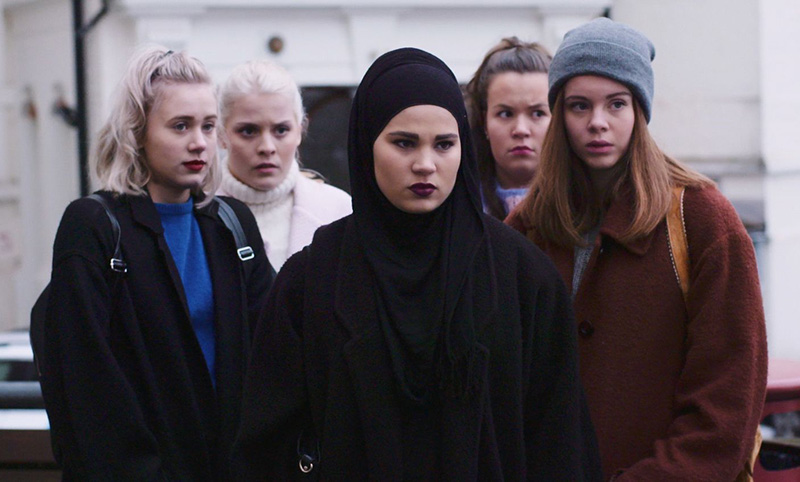
All this is, of course, in the eye of the beholder. Some will experience Norwegian parents as highly involved in their children’s lives, perhaps longing for a past with fewer demands. NRK reporter Live Nelvik has made a TV series portraying this very idea.
Others, perhaps coming from a different cultural background, see Norwegian parenting as hands off, citing children who are home alone, walk to school independently and catch public transportation to town at an early age.
Indeed, popular TV series Skam, picturing the lives of a group of Oslo-based high school kids (not a parent in sight), needed to tweak the script to include parents in the American version, Skam Austin.
There is no one correct way to raise a child, and what are ‘good values’ for me may sound ludicrous to you. I do believe it’s true what they say, though: it takes a village. If your village is elsewhere and you need someone to talk to here, feel free to reach out.
Meanwhile, I’ll let the teen continue to work on his game plan for school; freely, independently and (hopefully!) responsibly.
Author’s note: This text is based on light research of non-academic sources, and does not reflect the full extent of variety in child rearing norms. For those who are interested in a more academic, less generalized approach, Randi Wærdahl, Eugene Guribye or Marianne Gullestad can be good places to start.


My grand parents came from Norway. They all landed in Chicago about 1920. At age 78 I took a month long tour of Norway.
One of the things I remember most was that just about everyone could speak English. At one point I found myself near to about 4 boys about 12 years old. They were just jumping up on a wall about 3 feet tall with no effort.
I said hello to them and they at once started to speak to me in English. They were so polite. We talked about the wall jumping and I complemented on there speaking. They said they took a English class in school but they had really learned it from playing computer video games. It seems most video games are in English so they really learned it so they could play the games.
Frihet under ansvar. Works well when parents are good examples, or the culture includes a high degree of responsibility. Watching celebrated personalities, media and politicians should give parents and everyone much concern.